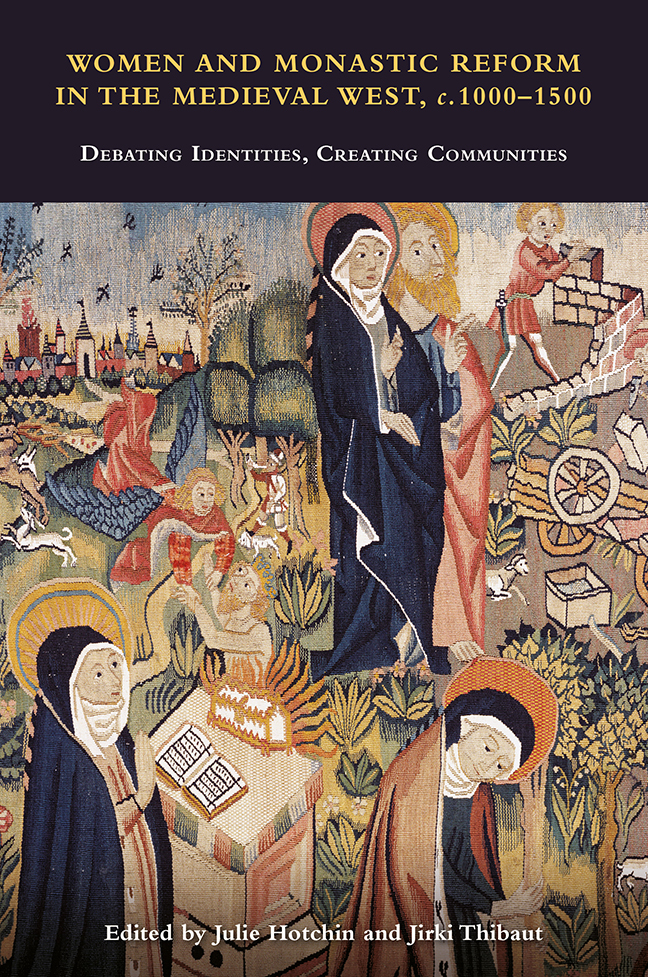 Women and Monastic Reform in the Medieval West, c.1000-1500
Women and Monastic Reform in the Medieval West, c.1000-1500 This chapter investigates the dynamics of institutional reform in northern Italy at the beginning of the thirteenth century. It focuses on how religious women influenced and shaped the processes of institutionalisation that affected their way of life. By examining two exemplary case studies from the northern region of Lombardy, I will explore how these mulieres religiose were gradually consolidated into monastic institutions through a long-term and negotiated process. Close attention to how these processes unfolded highlights how religious communities were shaped by their local social, religious and political circumstances. The roles of papal, episcopal and monastic authorities, local benefactors and stakeholders in the affected communities and, above all, the women themselves, are key to understanding the contingent processes through which mulieres religiose became Cistercian nuns.
The case studies in this chapter are from the northern Italian cities of Cremona and Pavia. The individual communities shared similar features, such as their location in an urban environment, strong local support and relation to episcopal authority, although the processes of institutionalisation unfolded along very different trajectories contingent upon specific local circumstances. This analysis allows us to examine the motives of various actors involved; it also gives an insight into how very different processes of institutional change nevertheless produced similar results in transforming the organisational structures of women's religious communities.
Religious Women and the Cistercian Order in Lombardy
Women's religious communities could be associated with the Cistercian Order in varying ways. Some female monasteries were officially incorporated into the Order by the General Chapter, although this juridical status did not necessarily guarantee the provision of spiritual care by the Cistercians. In contrast, many female communities were granted Cistercian privileges and the right to follow the Cistercian Institutiones by the pope, and were recognised as Cistercian by the Curia without any involvement by the General Chapter. Further, various monastic patrons, such as episcopal or secular founders, also favoured the Cistercian way of life and initiated processes to gain recognition and incorporation of their foundations with the General Chapter, as much as they could. The women concerned also endeavoured to live a religious life influenced by Cistercian ideals, adopting Cistercian customs and acquiring the benefits of their associated legal privileges, although they remained outside the formal structures of the General Chapter.
The links between female communities and the Cistercian Order were diverse, and the exact nature of this institutional relationship has been widely debated.
To save this book to your Kindle, first ensure [email protected] is added to your Approved Personal Document E-mail List under your Personal Document Settings on the Manage Your Content and Devices page of your Amazon account. Then enter the ‘name’ part of your Kindle email address below. Find out more about saving to your Kindle.
Note you can select to save to either the @free.kindle.com or @kindle.com variations. ‘@free.kindle.com’ emails are free but can only be saved to your device when it is connected to wi-fi. ‘@kindle.com’ emails can be delivered even when you are not connected to wi-fi, but note that service fees apply.
Find out more about the Kindle Personal Document Service.
To save content items to your account, please confirm that you agree to abide by our usage policies. If this is the first time you use this feature, you will be asked to authorise Cambridge Core to connect with your account. Find out more about saving content to Dropbox.
To save content items to your account, please confirm that you agree to abide by our usage policies. If this is the first time you use this feature, you will be asked to authorise Cambridge Core to connect with your account. Find out more about saving content to Google Drive.